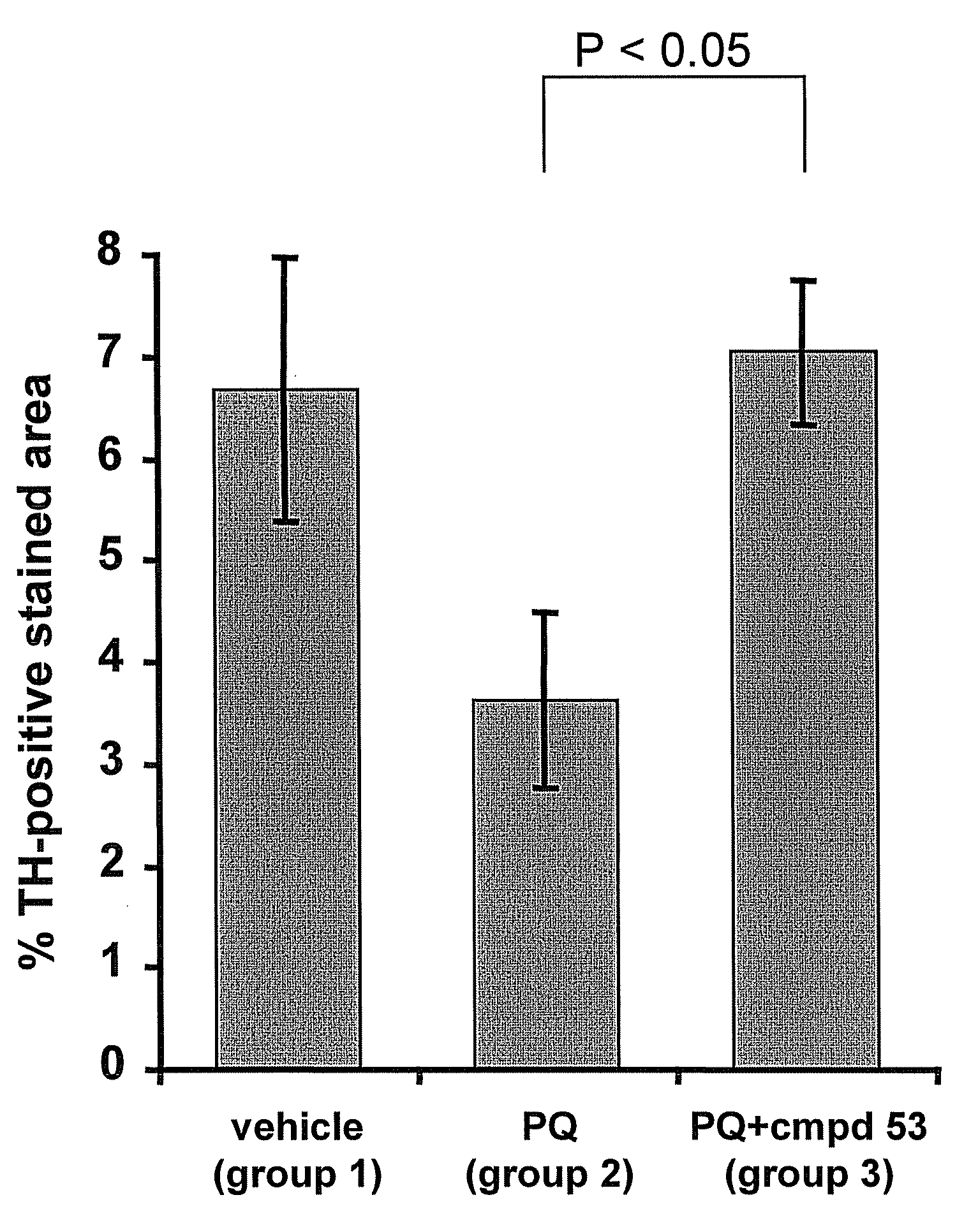Thiadiazole derivatives for the treatment of neurodegenerative diseases
a neurodegenerative disease and derivative technology, applied in the field of thiadiazole derivatives, can solve the problems of cognitive and/or motor decline, particularly toxic soluble protofibrillar intermediates of the aggregation process, and therapeutic attempts to inhibit the formation of insoluble aggregates may be conceptually wrong, so as to achieve effective therapeutic and/or prophylactic methods, the effect of effectively counteracting or inhibiting the toxic properties of -synuclein
- Summary
- Abstract
- Description
- Claims
- Application Information
AI Technical Summary
Benefits of technology
Problems solved by technology
Method used
Image
Examples
example 1
Amidine Formation
[0256]Illustrative compounds of the present invention have been prepared according to the synthetic pathway illustrated in schemes 1 and 2 herein-description.
[0257]Amidine formation according to step (a) of scheme 1, is schematically shown below:
[0258]The nitrile compound is treated with gaseous HCl in a mixture of anhydrous chloroform and methanol to yield the imino ether hydrochloride. Subsequently, the mixture is treated with dry ammonia to yield the amidine compound.
example 2
Synthesis of Intermediate 3-benzyl-5-chloro-1,2,4-thiadiazole Derivatives
[0259]The intermediate 3-benzyl-5-chloro-1,2,4-thiadiazole derivatives in step (b) of scheme 1 have been obtained according to the following procedure. In a three-necked 500 mL flask equipped with a mechanical stirrer, a dropping funnel and a thermometer, dichloromethane (DCM) (130 ml) was charged and the appropriate amidine hydrochloride (0.1 mol) was suspended in it upon efficient stirring. Then perchloromethyl mercaptane (16.73 g) was added to the suspension. The stirred solution was cooled to −14° C. by using ammonium chloride-ice cooling bath. Then aqueous NaOH solution (0.5 mole dissolved in 30 ml distilled water) was added dropwise to the solution upon efficient stirring while keeping the inner temperature accurately below −8° C. When the addition was finished the reaction mixture was stirred for another hour while the temperature was let to rise to room temperature. The precipitated NaCl was filtered of...
example 3
Nucleophilic Replacement of 5-chloro-3-(substituted benzyl)-thiadiazole Derivatives with Cyclic Diamines
[0265]
[0266]A cyclic diamine represented by the structural formula (A″) (such as, but not limited to, the optionally R6-substituted piperazine derivative shown in the above scheme) (50 mmole) was dissolved in ethanol (EtOH) (10-20 ml) and a 3-(substituted benzyl)-5-chloro-1,2,4-thiadiazole derivative (10 mmole) from example 2 (in the above scheme, Ar1 designates an optionally monosubstituted or polysubstituted phenyl group, thus the derivative corresponds to structural formula (III) wherein R12 and R13 are both hydrogen) was added in portions. The reaction mixture was refluxed until the reaction was complete. The course of the reaction was monitored by thin layered chromatography (TLC) in an eluent mixture of DCM-EtOH 5:1. When reaction was complete (usually after 3 to 6 hours), the reaction mixture was evaporated to dryness. The residue was dissolved in water and the product was ...
PUM
 Login to View More
Login to View More Abstract
Description
Claims
Application Information
 Login to View More
Login to View More - R&D
- Intellectual Property
- Life Sciences
- Materials
- Tech Scout
- Unparalleled Data Quality
- Higher Quality Content
- 60% Fewer Hallucinations
Browse by: Latest US Patents, China's latest patents, Technical Efficacy Thesaurus, Application Domain, Technology Topic, Popular Technical Reports.
© 2025 PatSnap. All rights reserved.Legal|Privacy policy|Modern Slavery Act Transparency Statement|Sitemap|About US| Contact US: help@patsnap.com



